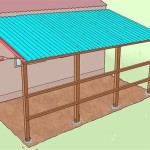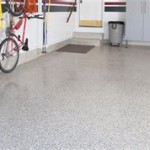How To Paint a Metal Garage Door to Look Like Wood Trim
Achieving the aesthetic appeal of a wood trim garage door without the associated maintenance and cost of real wood is possible through a specialized painting process. This guide provides a detailed account of how to transform a metal garage door to mimic the appearance of natural wood, offering a cost-effective and durable alternative.
Preparation: Ensuring a Proper Foundation for Painting
The success of a faux wood finish hinges on thorough preparation. Prior to any painting, the garage door surface must be meticulously cleaned, de-glossed, and primed. This process ensures optimal adhesion and a smooth canvas for the subsequent painting stages.
Begin by washing the entire garage door with a solution of warm water and a degreasing cleaner. This step removes dirt, grime, and any existing surface contaminants. A pressure washer can be used for speed and efficiency, but care should be exercised to avoid damaging the door's surface. After washing, rinse the door thoroughly with clean water to eliminate any remaining soap residue. Allow the door to dry completely before proceeding.
Once the door is dry, inspect it for any signs of rust or damage. Address any rust spots by sanding them down with a wire brush or sandpaper. Apply a rust-inhibiting primer to these areas to prevent future corrosion. Fill any dents or imperfections with an automotive body filler, following the manufacturer's instructions. Sand the filler smooth once it has dried completely.
De-glossing the existing paint surface is crucial for proper adhesion. This can be achieved through sanding or the application of a liquid de-glosser. If sanding, use a fine-grit sandpaper (220-grit or higher) to lightly scuff the surface. If using a liquid de-glosser, apply it according to the manufacturer's directions, ensuring even coverage. Wipe the door clean with a tack cloth to remove any sanding dust or residue from the de-glosser.
Priming is the final step in the preparation phase. A high-quality exterior metal primer is essential for providing a uniform surface and promoting paint adhesion. Choose a primer that is compatible with the type of paint that will be used for the faux wood finish. Apply the primer in thin, even coats, following the manufacturer's instructions. Allow the primer to dry completely before moving on to the next stage. In situations where there is existing peeling paint, consider scraping those areas thoroughly and applying a self-etching primer to ensure a strong bond.
Base Coating: Establishing the Foundation Color
The base coat serves as the foundation for the faux wood grain. Selecting the appropriate base color is vital for achieving a realistic wood appearance. Typically, a medium to light brown shade is recommended, emulating the natural tones of wood. Consider shades like tan, beige, or a light oak color. The choice of base coat color should complement the desired overall aesthetic and the chosen wood grain color.
Apply the base coat using a high-quality exterior paint formulated for metal surfaces. Acrylic latex paints are generally recommended due to their durability, weather resistance, and ease of application. Apply the paint in thin, even coats, using a brush, roller, or sprayer. When using a brush, opt for a high-quality synthetic brush designed for latex paints. When using a roller, choose a smooth roller cover to minimize stippling. If using a sprayer, ensure proper settings and technique to avoid runs or overspray.
Allow the base coat to dry completely according to the manufacturer's instructions. Applying multiple thin coats is preferable to a single thick coat, as it reduces the risk of drips and ensures even coverage. Lightly sand the base coat with fine-grit sandpaper (320-grit or higher) between coats to create a smooth surface for the subsequent layers.
The goal of the base coat is to provide a solid, uniform color that will serve as the backdrop for the faux wood grain. Ensure that all areas of the garage door are adequately covered with the base coat, including edges, corners, and any recessed areas. Careful application of the base coat will significantly enhance the final appearance of the faux wood finish.
Creating the Wood Grain: Applying the Faux Wood Effect
This is where the transformation truly takes place. Applying the faux wood grain requires careful technique and the use of specialized tools, such as a wood graining tool or a rubber graining rocker. These tools help to replicate the natural patterns and textures found in wood.
Select a wood grain color that complements the base coat and emulates the desired type of wood. Darker browns, such as burnt umber, chocolate brown, or walnut, are commonly used to create contrast and depth. It is advisable to test the color combination on a small, inconspicuous area of the door to ensure that the desired effect is achieved.
Apply a thin layer of the wood grain color over a small section of the base coat. Work in manageable sections to prevent the paint from drying too quickly. Using the wood graining tool, gently rock or drag the tool across the wet paint, following the direction of the desired wood grain. Experiment with different angles and pressures to create variations in the grain pattern. Overlap each pass slightly to avoid gaps or inconsistencies.
For a more realistic effect, consider using multiple wood grain colors. Apply lighter and darker shades to different areas of the door to create highlights and shadows. This technique adds depth and dimension to the faux wood finish, making it appear more authentic. Another method is to use a sea sponge to dab on small sections of a lighter color after you have created the grain. This gives the appearance of wood pores.
Clean the wood graining tool frequently during the application process to remove excess paint and prevent the tool from becoming clogged. Use a clean cloth or rag to wipe the tool after each pass. If the paint dries too quickly, lightly mist the surface with water to keep it workable.
Patience and practice are key to achieving a convincing faux wood grain. Experiment with different techniques and tools to find what works best. Watching tutorials and practicing on scrap metal can help to develop the necessary skills and confidence. It is important to note that no two pieces of wood are exactly alike, so slight variations in the grain pattern are natural and add to the authenticity of the finish.
After completing one section, move on to the next, overlapping slightly to blend the transitions seamlessly. Continue this process until the entire garage door is covered with the faux wood grain. Allow the paint to dry completely according to the manufacturer's instructions.
The last step is to apply a protective clear coat. This will protect the faux wood finish from the elements and enhance its durability. Apply the clear coat in thin, even coats, using a brush, roller, or sprayer. Choose a clear coat that is specifically designed for exterior use and is compatible with the type of paint that you have used. Allow the clear coat to dry completely before using the garage door. This will give your "wood trim" look a longer life and protect your hard work.

Giani Wood Look For Garage Doors Full Demo

How To Make A Metal Door Look Like Wood With Zar Stain

How To Paint A Door Look Like Wood 7 Shade Options

Faux Wood Garage Door Tutorial Prodigal Pieces

How To Paint A Door Look Like Wood It S Easier Than You Think Average But Inspired

How To Paint A Door Look Like Wood 7 Shade Options

How To Paint A Garage Door Look Like Wood

Faux Finishing A Garage Door To Look Like Wood Roots Wings Furniture Llc

Faux Finishing A Garage Door To Look Like Wood Roots Wings Furniture Llc

Diy Garage Door Makeover With Stain Domestically Speaking
Related Posts








